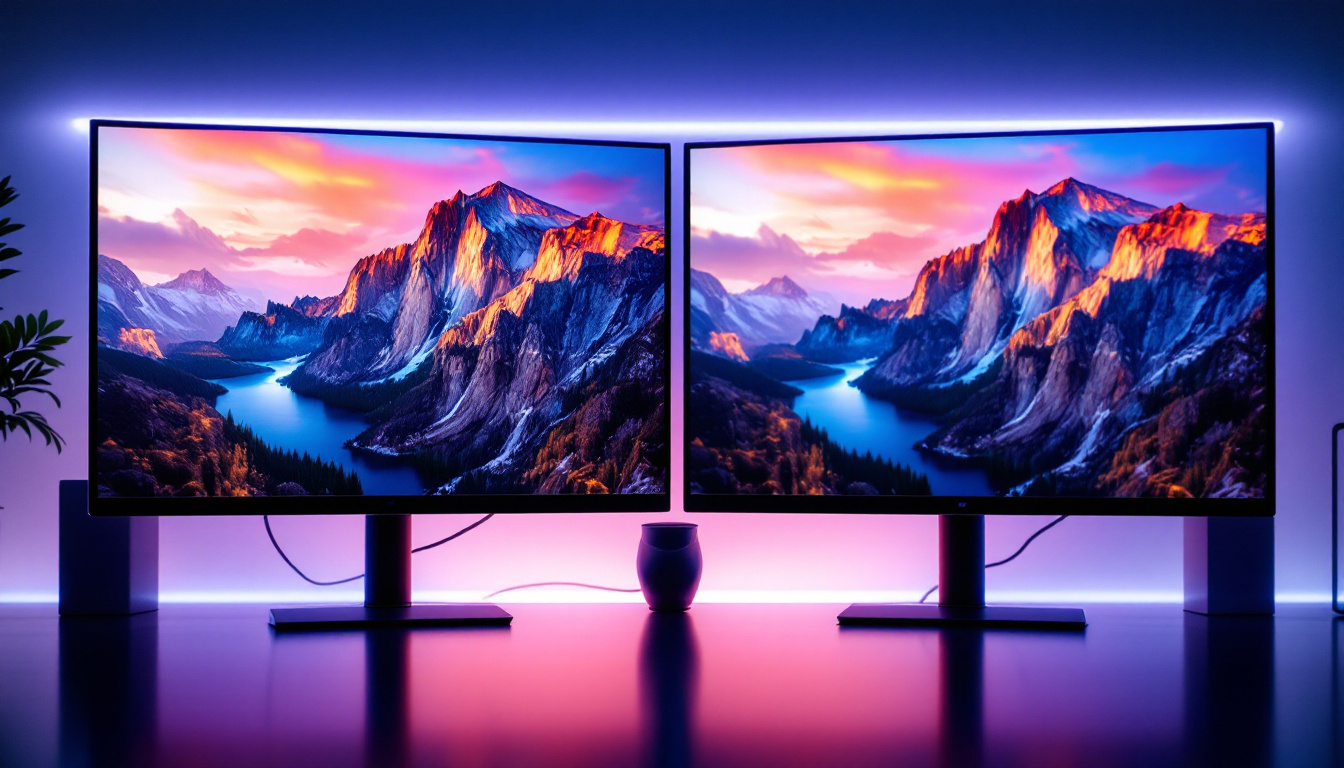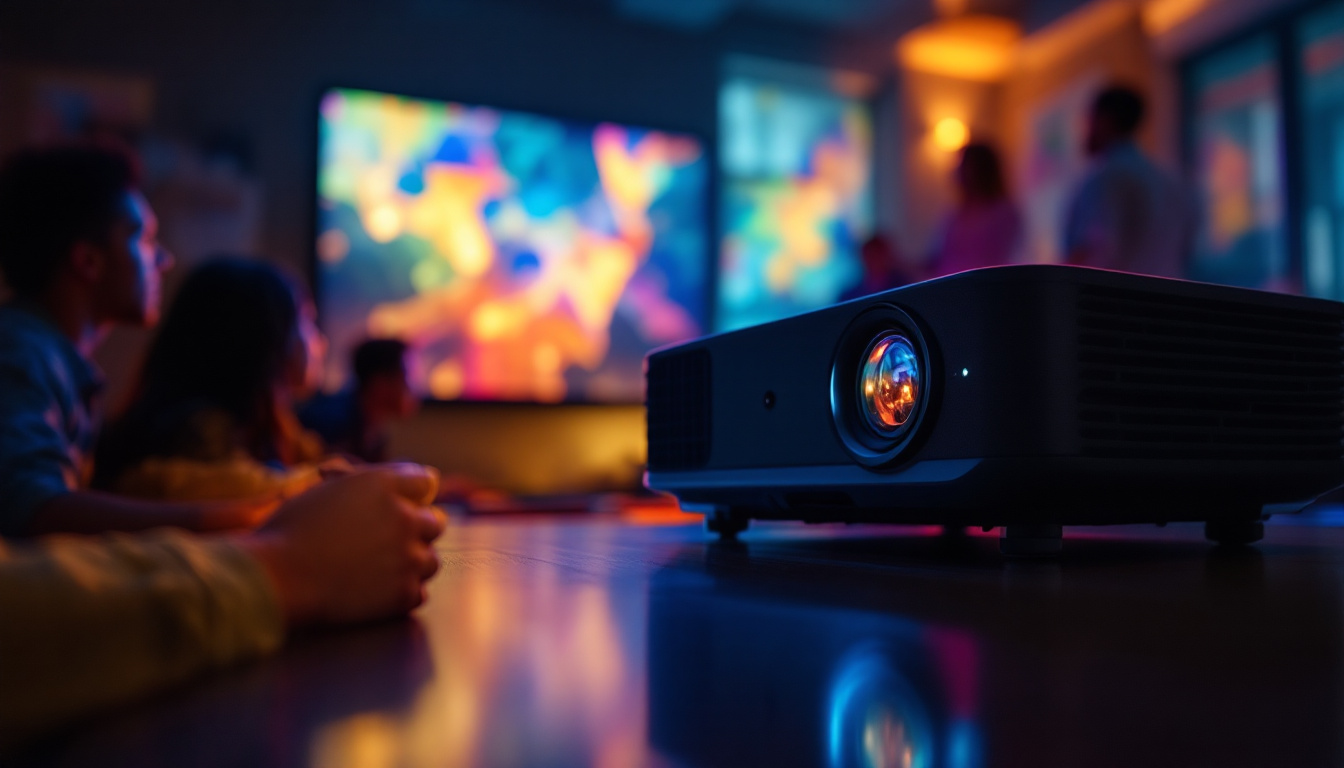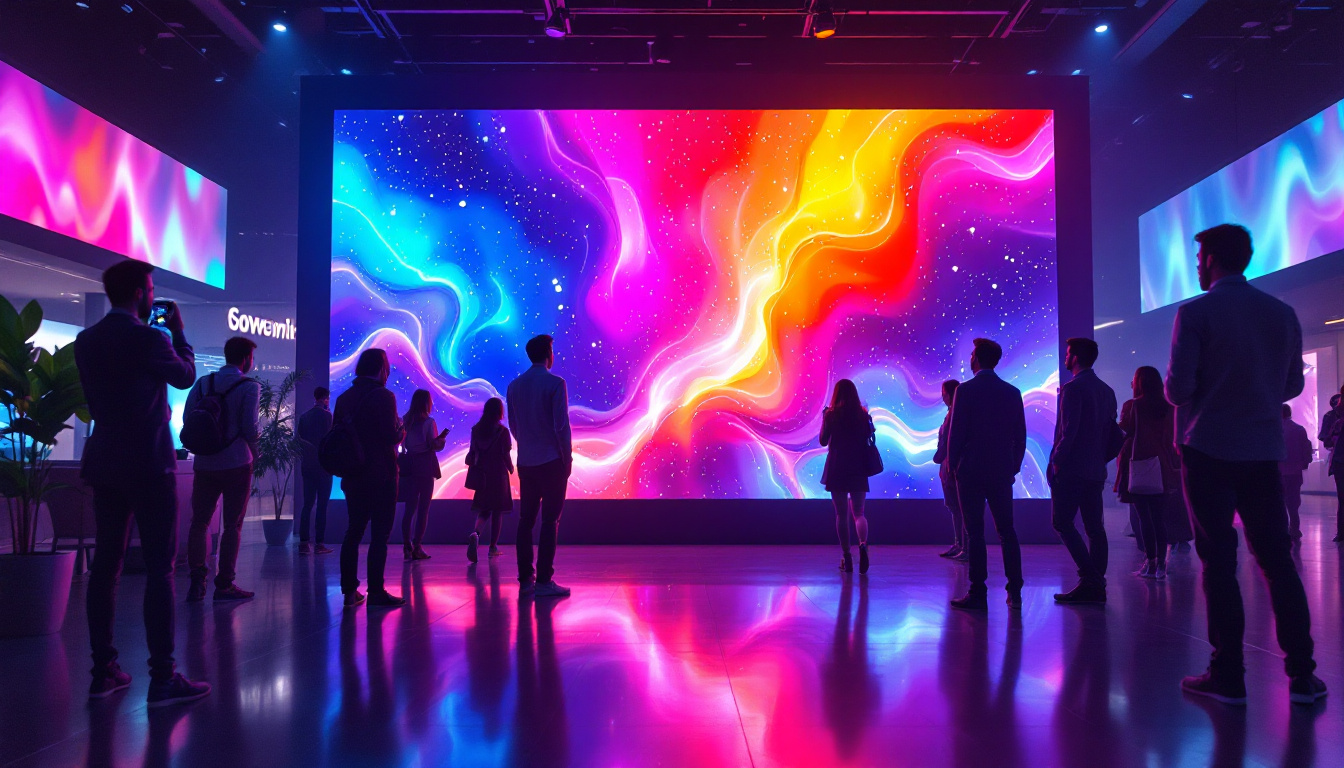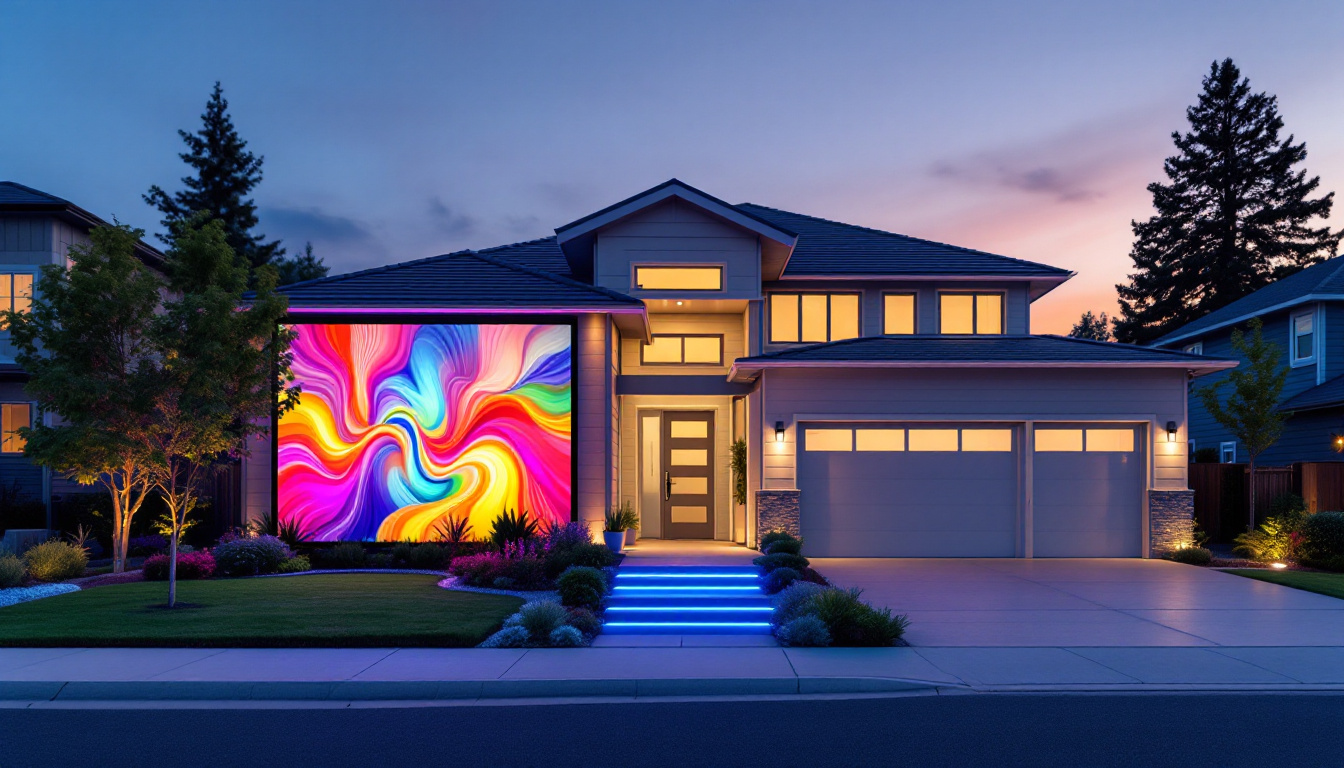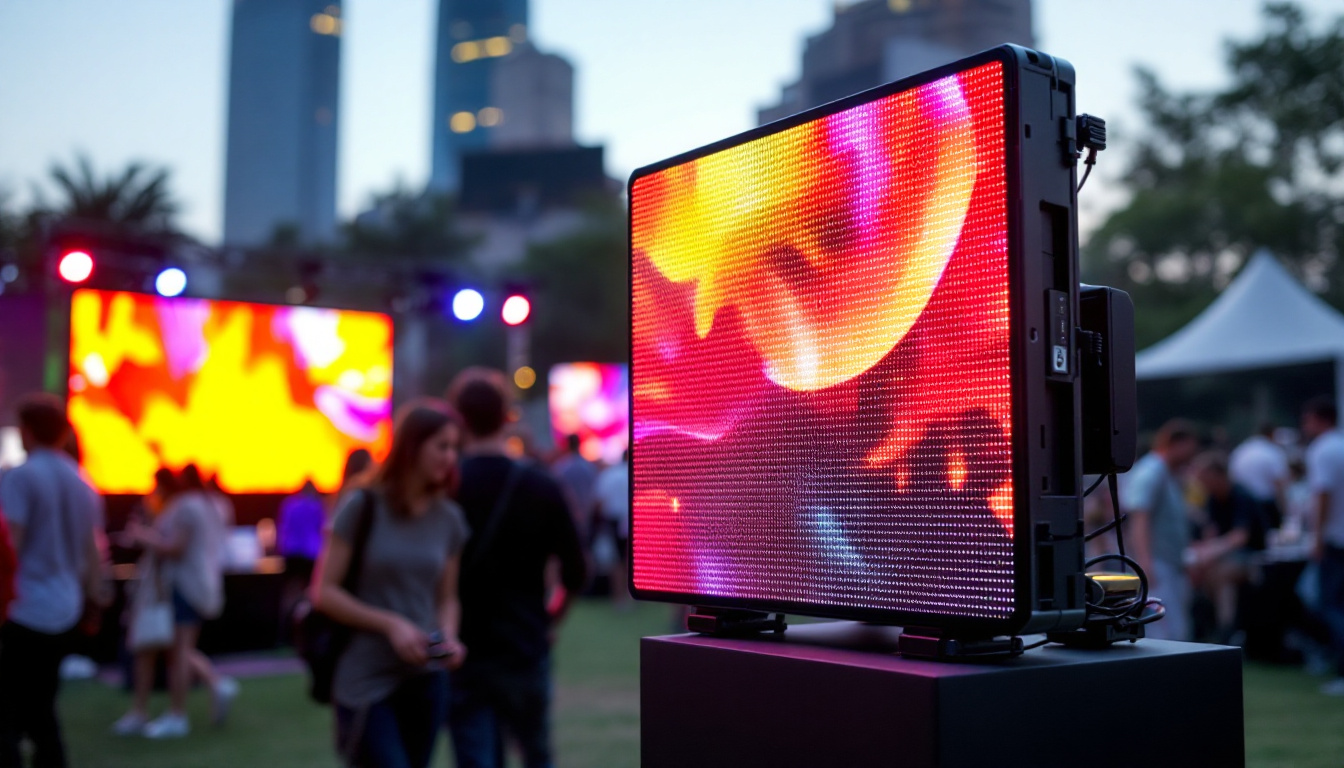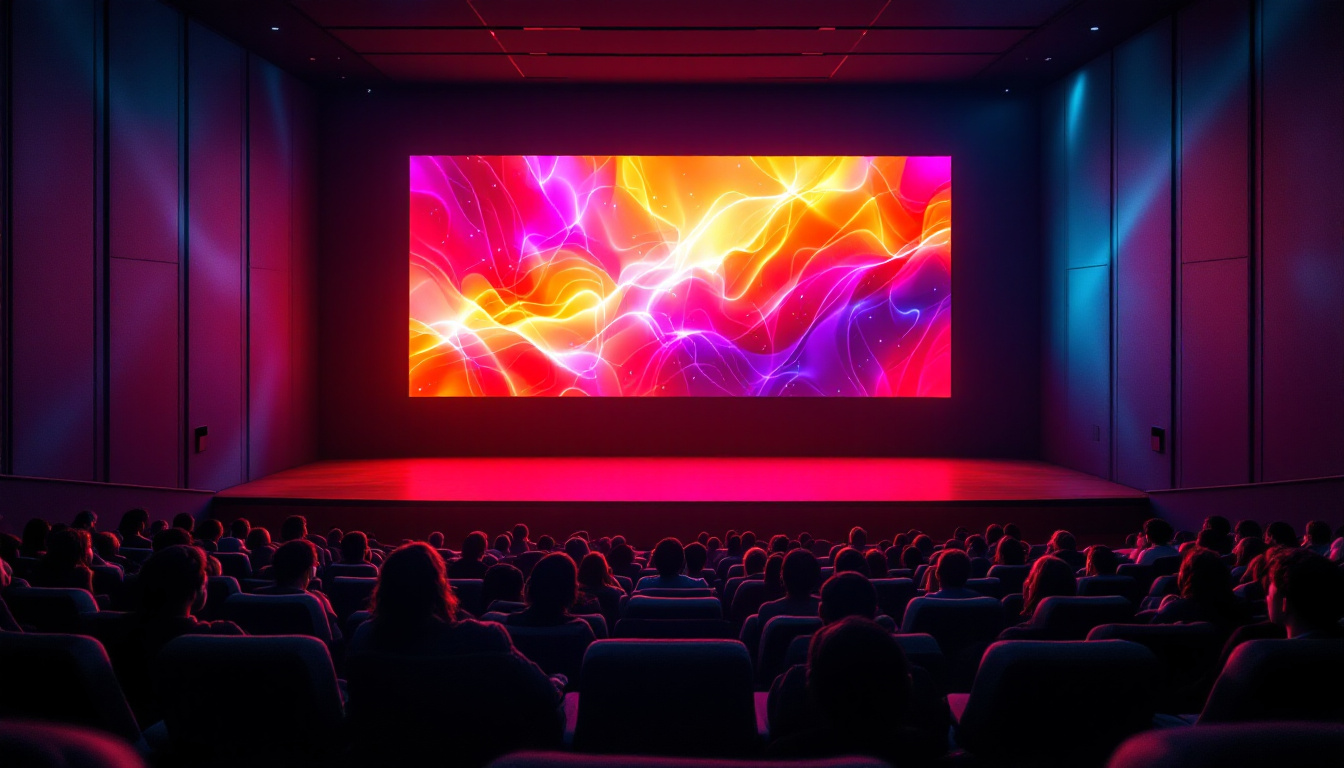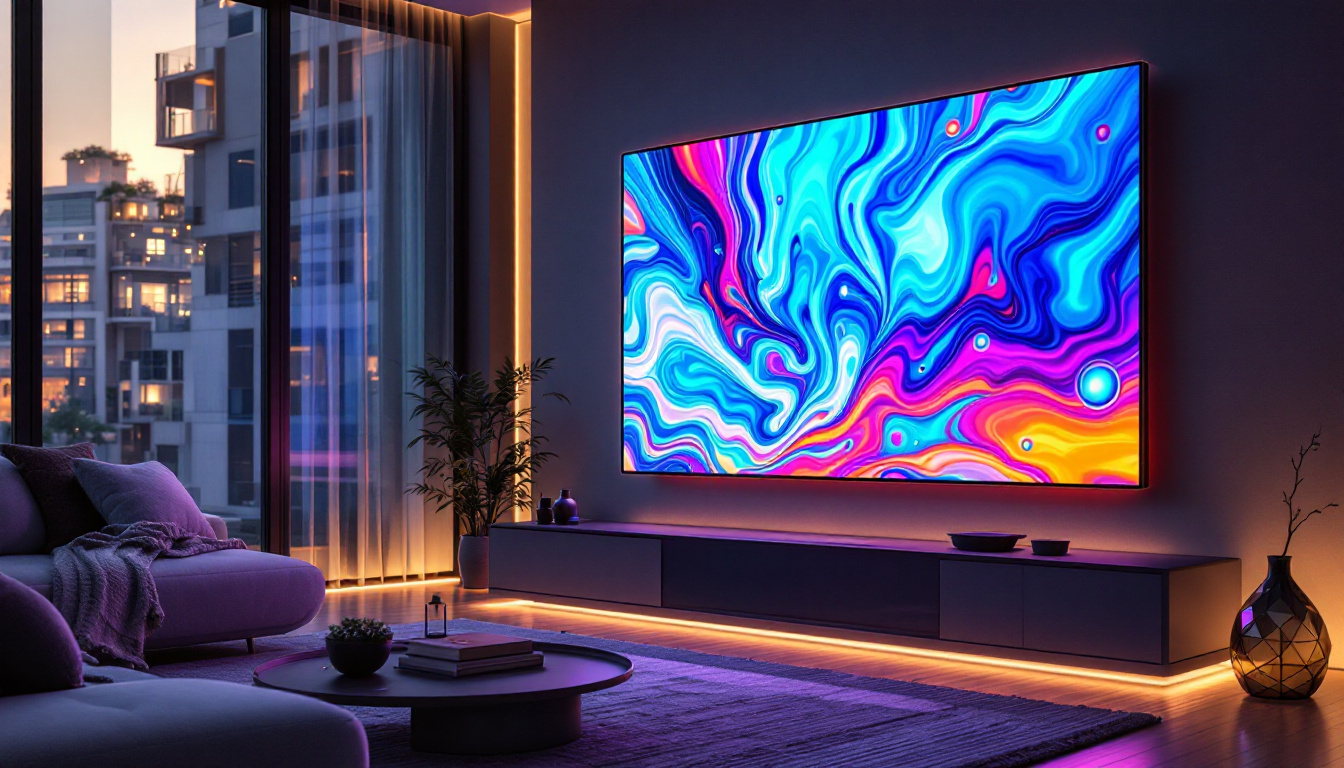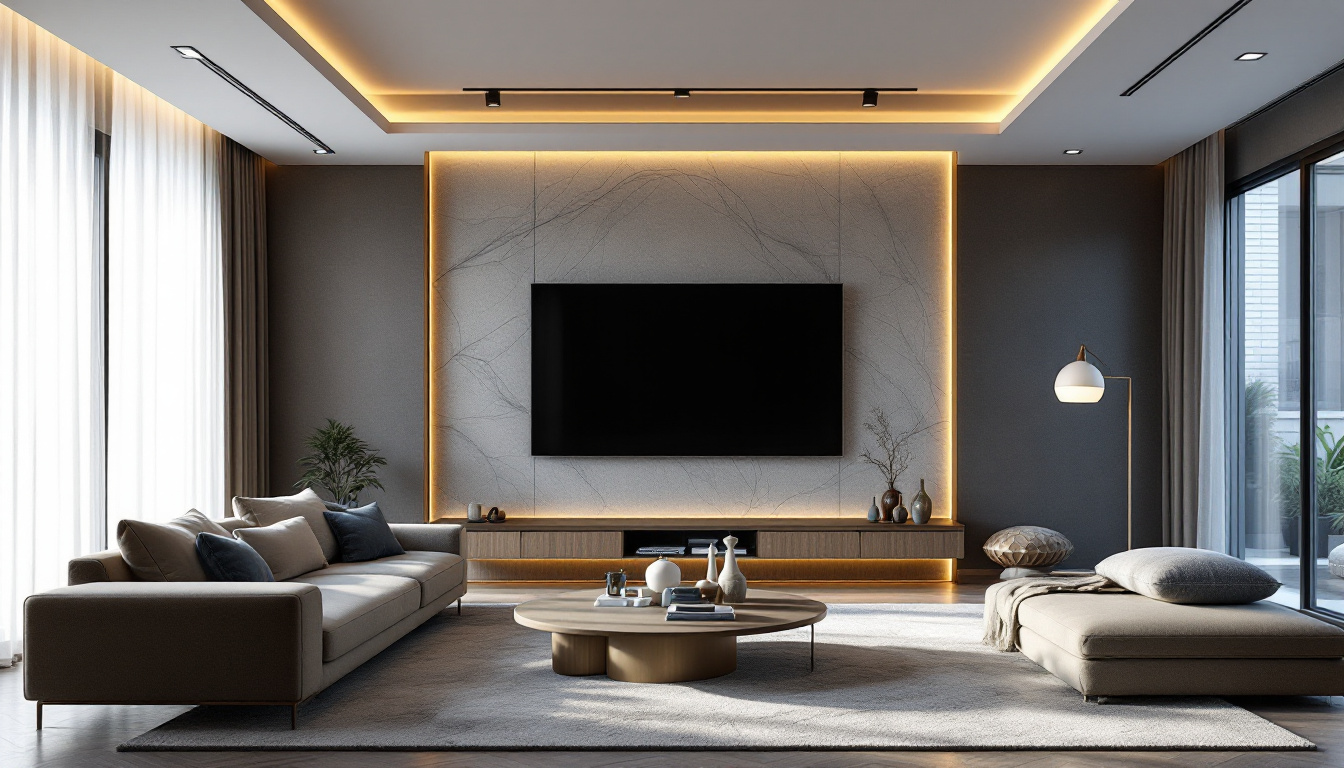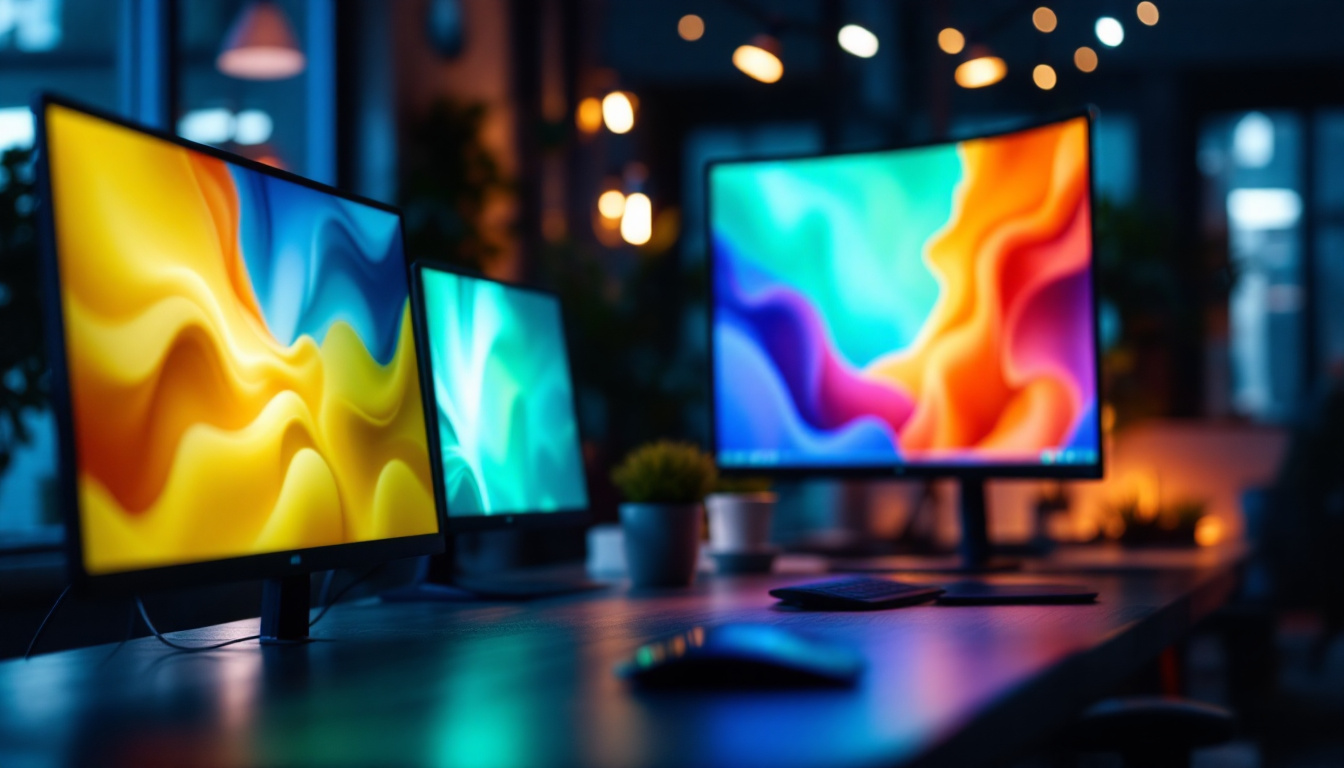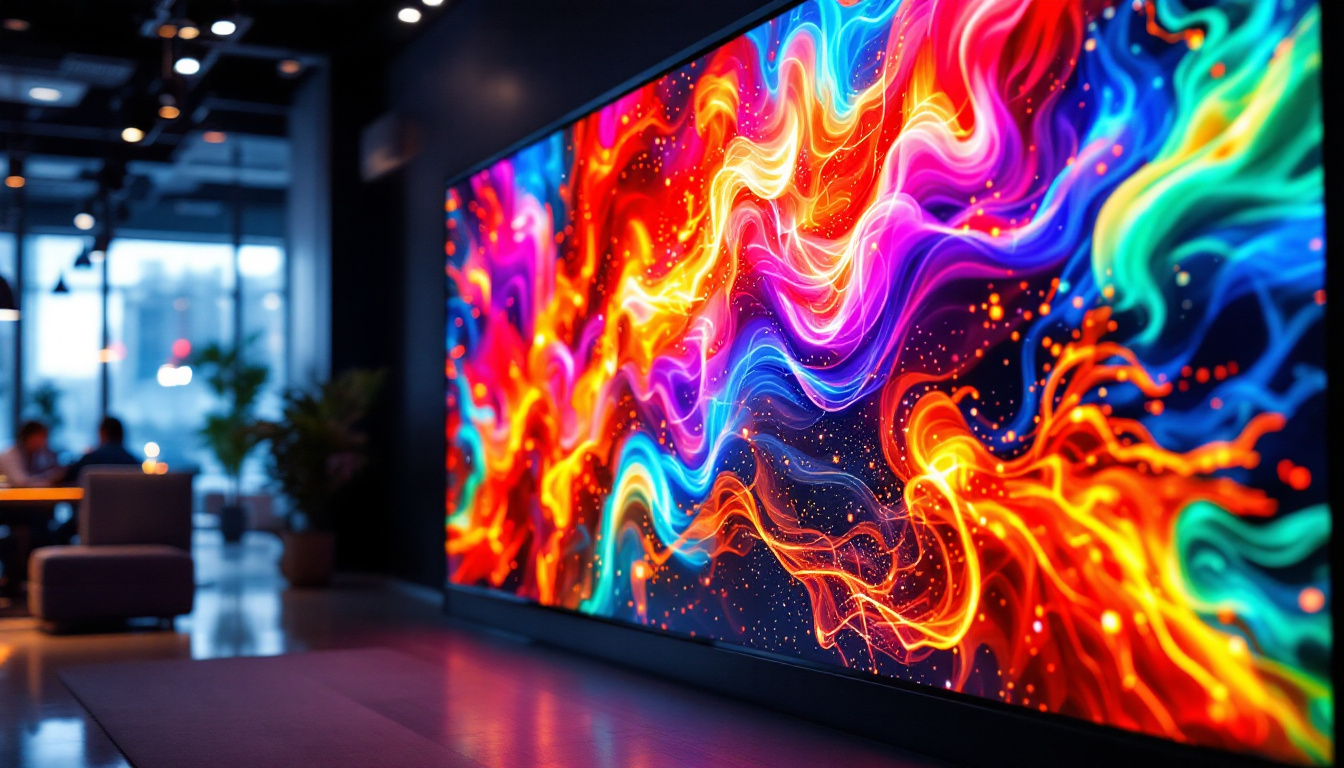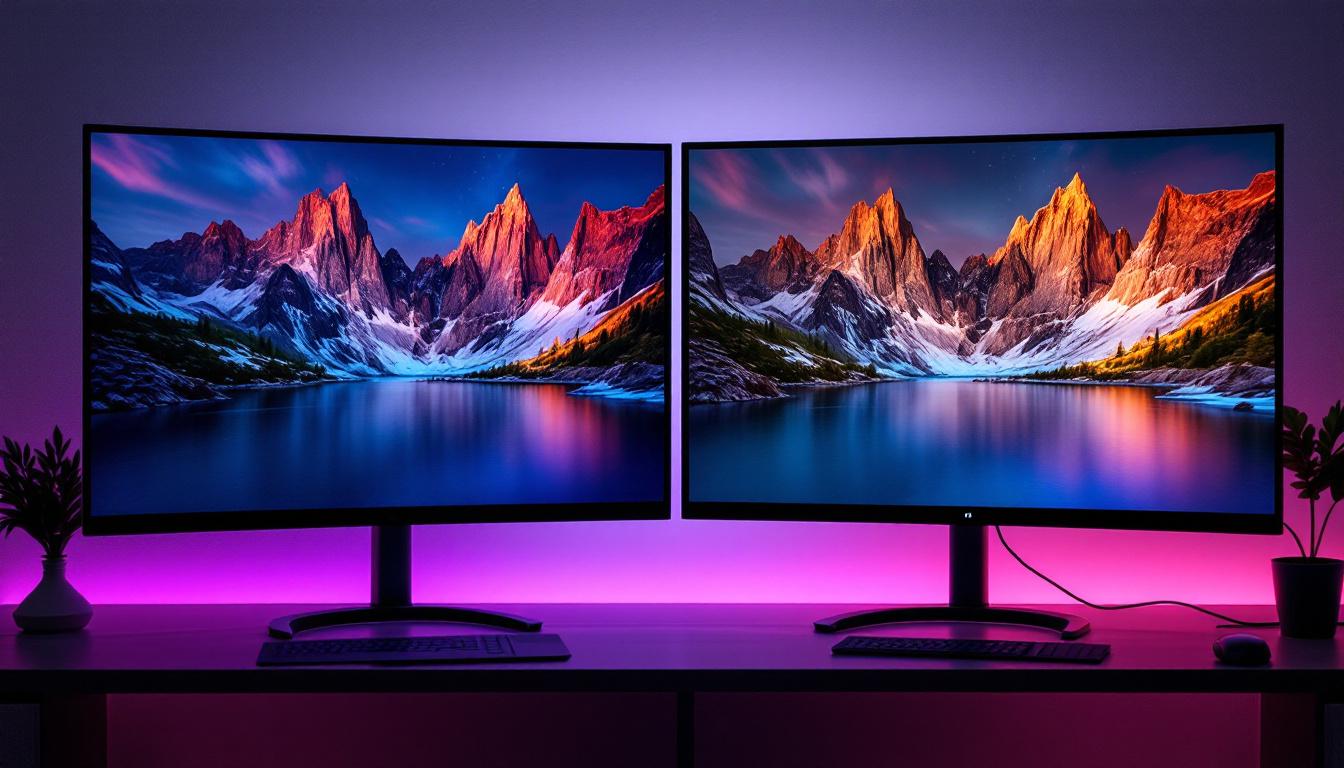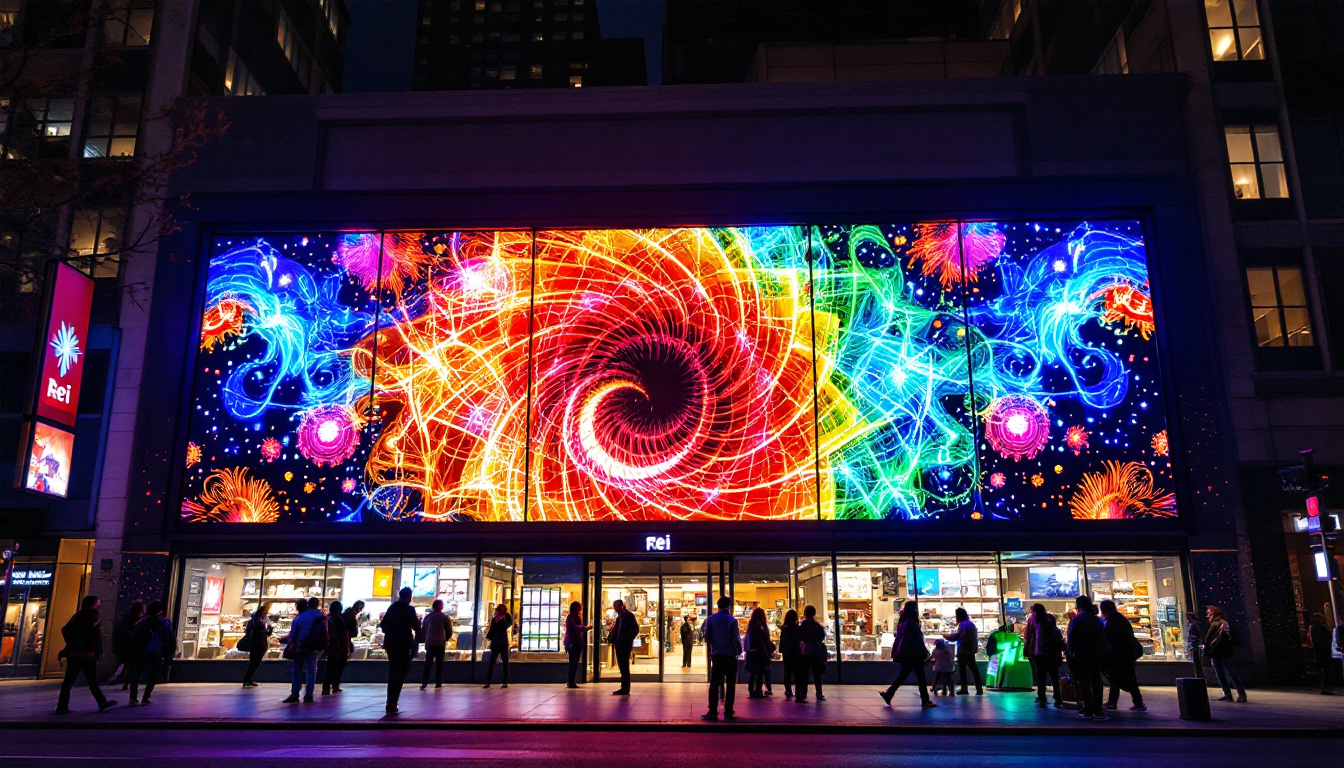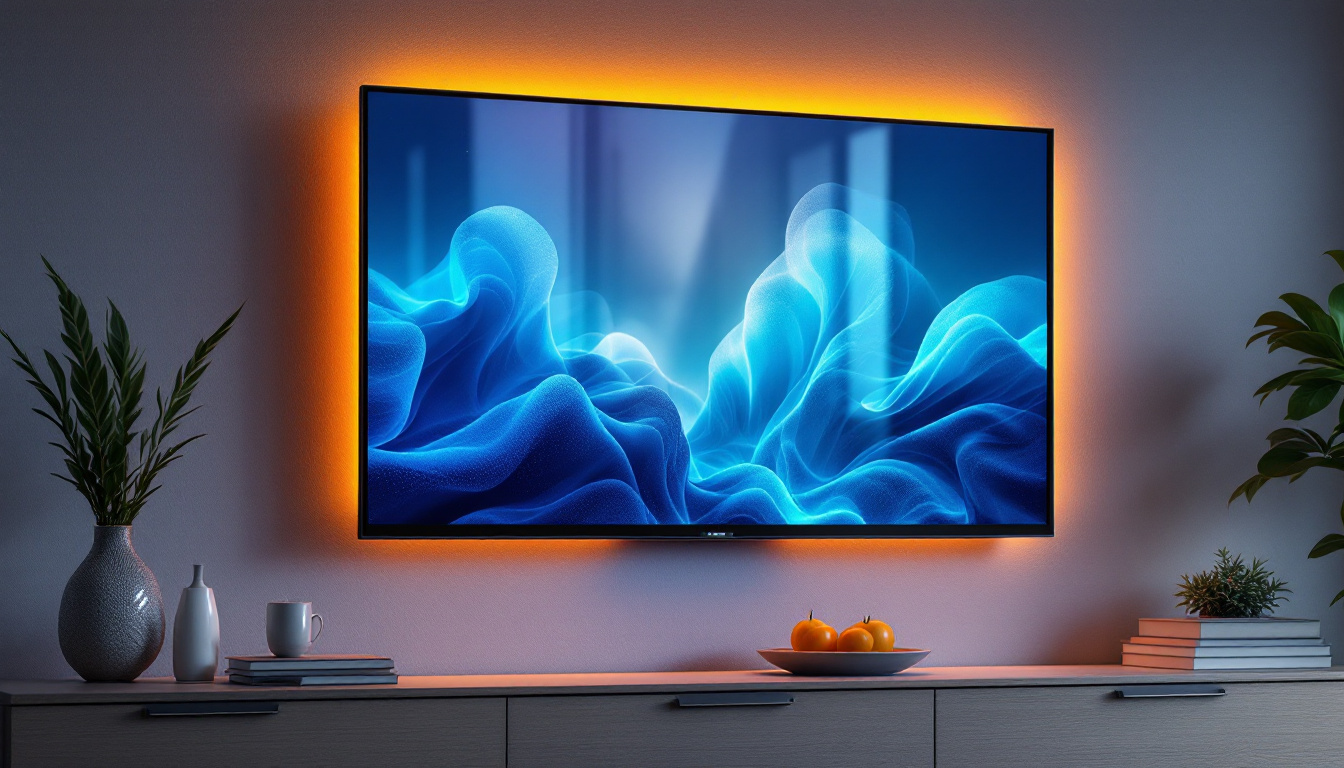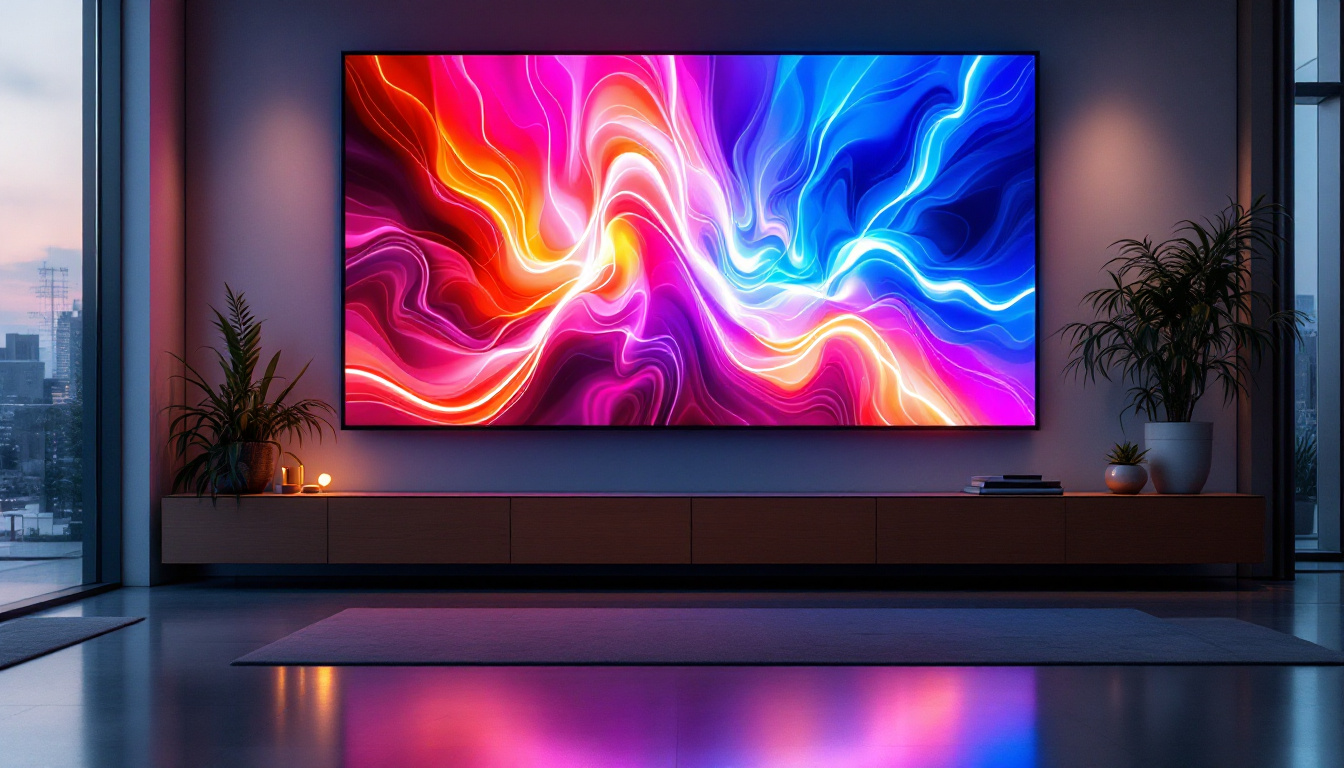In the world of display technology, understanding the concept of contrast ratio is essential for anyone looking to purchase a new monitor or television. Contrast ratio plays a crucial role in determining the quality of the image produced by LED displays. This article delves into what contrast ratio means, how it is measured, and its significance in the realm of monitors.
Defining Contrast Ratio
At its core, contrast ratio refers to the difference in luminance between the brightest white and the darkest black that a monitor can display. It is a critical factor that influences the overall visual experience, particularly in terms of image depth and clarity. A higher contrast ratio indicates a greater difference between these two extremes, leading to more vibrant colors and a more immersive viewing experience. This is especially important for tasks that require precision, such as graphic design and video editing, where accurate color representation can make a significant difference in the final output.
Understanding Luminance
Luminance is a measure of the intensity of light emitted from a surface per unit area in a given direction. In the context of monitors, it refers to how bright the display can get. The brighter the white, the more pronounced the contrast with the darkest black. This variance is what gives images their depth and realism. Moreover, luminance can be affected by various factors, including the technology used in the display, such as LCD, OLED, or LED. Each of these technologies has its own way of producing light and color, which can impact the overall contrast ratio and the viewer’s experience.
How Contrast Ratio Is Calculated
Contrast ratio is typically expressed as a ratio, such as 1000:1 or 3000:1. This means that the brightest white is 1000 or 3000 times brighter than the darkest black. The formula for calculating contrast ratio is relatively straightforward:
Contrast Ratio = Luminance of White / Luminance of Black
For example, if a monitor can produce a white luminance of 300 cd/m² (candelas per square meter) and a black luminance of 0.3 cd/m², the contrast ratio would be:
Contrast Ratio = 300 / 0.3 = 1000:1
Understanding this calculation is essential for consumers looking to purchase a new monitor, as it allows them to compare different models effectively. However, it is important to note that the advertised contrast ratios can sometimes be misleading. Manufacturers may use dynamic contrast ratios, which can artificially inflate the numbers by adjusting the brightness of the backlight during scenes with varying light levels. Therefore, when evaluating monitors, it is crucial to consider real-world performance and reviews, rather than solely relying on specifications.
Types of Contrast Ratios
There are various types of contrast ratios that are often referenced in specifications, and understanding these distinctions can help consumers make informed decisions.
Static vs. Dynamic Contrast Ratio
Static contrast ratio measures the difference between the brightest and darkest points on the screen at the same time. This is a more reliable measure of a monitor’s performance because it reflects the actual capabilities of the display under normal operating conditions.
Dynamic contrast ratio, on the other hand, refers to the difference measured over time, often achieved through software enhancements that adjust brightness levels dynamically. While dynamic contrast ratios can appear impressive in marketing materials, they may not accurately represent real-world performance.
Real-World Implications
Understanding the differences between static and dynamic contrast ratios is crucial for consumers. A monitor with a high dynamic contrast ratio may not necessarily provide a better viewing experience than one with a lower static contrast ratio. Therefore, it is advisable to prioritize static contrast ratios when evaluating display quality.
Moreover, the implications of contrast ratios extend beyond mere numbers; they significantly influence the viewing experience in various contexts. For instance, in gaming, a monitor with a high static contrast ratio can enhance the depth and detail of dark scenes, making it easier for players to spot enemies lurking in shadows. Similarly, in professional settings such as graphic design or video editing, accurate color representation is paramount, and a monitor with a superior static contrast ratio can ensure that colors are displayed as intended, minimizing the risk of errors in critical projects.
Additionally, the environment in which a monitor is used can also affect the perceived contrast ratio. For example, a display with a high static contrast ratio may perform exceptionally well in a dimly lit room, providing deep blacks and vibrant colors. However, in a brightly lit environment, reflections and glare can diminish the effectiveness of even the best monitors, making it essential for consumers to consider both the specifications and their intended usage conditions when making a purchase decision.
The Importance of Contrast Ratio in Monitors
Contrast ratio significantly impacts various aspects of monitor performance, including color accuracy, detail visibility, and overall image quality. Here are some key areas where contrast ratio plays a vital role:
Color Depth and Accuracy
A high contrast ratio enhances color depth, allowing for a more extensive range of colors to be displayed. This is particularly important for professionals in fields such as graphic design and video editing, where color accuracy is paramount. A monitor with a low contrast ratio may struggle to display subtle color differences, leading to a less accurate representation of images. Moreover, the ability to differentiate between similar shades can be crucial when working on projects that require precision, such as retouching photographs or creating digital illustrations. In these scenarios, a monitor that accurately reproduces colors can make the difference between a mediocre and an exceptional final product.
Viewing Experience in Different Environments
The environment in which a monitor is used can also affect the perceived contrast ratio. In brightly lit rooms, a monitor with a higher contrast ratio will perform better, as it can maintain image clarity and vibrancy even in challenging lighting conditions. Conversely, a monitor with a low contrast ratio may appear washed out and less engaging in such environments. Additionally, the placement of the monitor relative to light sources can further influence the viewing experience. For instance, monitors with anti-glare coatings can help mitigate reflections and improve visibility, allowing users to take full advantage of the monitor’s contrast capabilities, regardless of the ambient light. This adaptability is essential for users who frequently switch between different workspaces or environments.
Gaming and Multimedia Applications
For gamers and multimedia enthusiasts, contrast ratio can significantly enhance the experience. High contrast ratios allow for deeper blacks and brighter highlights, making games and movies more immersive. Shadows and highlights become more pronounced, which can be crucial in fast-paced gaming scenarios where visibility is key. Furthermore, the emotional impact of a scene can be amplified by a monitor’s ability to render contrasting elements effectively; for example, a dark, suspenseful moment in a horror game can be made more intense with a monitor that showcases stark contrasts. This level of detail not only enhances gameplay but also contributes to a more engaging cinematic experience when watching films or streaming content. As technology advances, many modern monitors also incorporate features like HDR (High Dynamic Range), which further leverages contrast ratios to deliver stunning visuals that captivate audiences and elevate the overall viewing experience.
How to Choose a Monitor with an Optimal Contrast Ratio
When selecting a monitor, contrast ratio should be one of the many factors considered. Here are some tips to help choose a monitor with an optimal contrast ratio:
Check Specifications
Always check the manufacturer’s specifications for the static contrast ratio. Look for models that provide this information clearly, as it is a more accurate reflection of the monitor’s performance. Avoid relying solely on dynamic contrast ratios, as they can be misleading.
Consider the Panel Technology
Different types of panel technologies, such as IPS, TN, and VA, have varying contrast ratios. VA panels, for instance, typically offer better contrast ratios compared to TN panels, making them a favorable choice for users who prioritize image quality. Understanding the strengths and weaknesses of each panel type can guide purchasing decisions.
Read Reviews and User Feedback
Before making a purchase, it is beneficial to read reviews and user feedback. Many reviews will include practical insights about the monitor’s performance in real-world scenarios, including how it handles contrast in various lighting conditions. This information can provide a more comprehensive understanding of how the monitor will perform in everyday use.
Limitations of Contrast Ratio
While contrast ratio is an important metric, it is not the sole determinant of display quality. Other factors, such as color accuracy, refresh rate, and response time, also play critical roles in overall performance.
Impact of Ambient Lighting
Ambient lighting can significantly influence the perceived contrast ratio. A monitor with a high contrast ratio may still appear less impressive in bright environments where glare and reflections can wash out the image. Therefore, it is essential to consider the intended use environment when evaluating contrast ratios.
Calibration Needs
Many monitors require calibration to achieve optimal performance. A monitor may have a high contrast ratio out of the box, but without proper calibration, the colors and brightness may not be accurate. Investing time in calibrating the monitor can enhance the viewing experience and ensure that the contrast ratio is effectively utilized.
Conclusion
In summary, contrast ratio is a fundamental aspect of monitor performance that significantly impacts image quality and viewing experience. Understanding its definition, types, and implications can help consumers make informed decisions when purchasing a monitor. While a high contrast ratio can enhance color depth and visibility, it is essential to consider it alongside other factors such as panel technology and ambient lighting conditions.
Ultimately, the right monitor will depend on individual needs and preferences, whether for gaming, professional work, or casual use. By prioritizing a static contrast ratio and considering the various factors discussed, users can select a monitor that meets their expectations and provides a satisfying visual experience.
Discover the Perfect Contrast with LumenMatrix
As you seek a monitor that meets your high standards for contrast ratio and image quality, consider the innovative solutions from LumenMatrix. With our commitment to cutting-edge LED display technology, we offer a range of products designed to deliver exceptional visual experiences. From Indoor and Outdoor LED Wall Displays to specialized options like Vehicle, Sports, and Floor LED Displays, our offerings ensure vibrant colors, deep blacks, and outstanding clarity. Elevate your viewing experience with our Custom, All-in-One, and Transparent LED Displays. Check out LumenMatrix LED Display Solutions today and see how we can enhance your visual communication with precision and impact.

